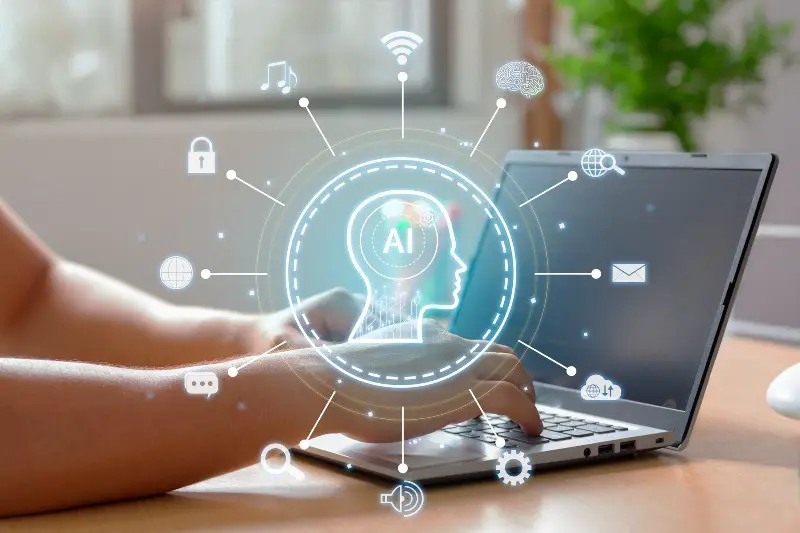As we look up at the night sky and wonder about the mysteries of the universe, we are on the brink of a new age of discovery. Artificial Intelligence (AI), a concept once confined to science fiction, is now a powerful tool that’s helping us explore the cosmos. From processing astronomical data to driving rovers on Mars, AI is revolutionizing space exploration and astronomy, allowing us to push the boundaries of what we thought possible. In this journey into the future of space exploration, we’ll look at the role AI plays and how it’s reshaping our understanding of the universe.
Defining the Role of AI in Space Exploration
AI has emerged as a crucial tool in space exploration, helping researchers navigate the vastness of space in ways that were previously unimaginable. It processes enormous amounts of data quickly, automates repetitive tasks, and makes predictions with uncanny accuracy. For instance, AI has been instrumental in analyzing the copious amounts of data sent back by probes and satellites, finding patterns in the noise that human researchers could easily miss.
NASA’s Kepler Space Telescope, launched to seek out planets beyond our solar system, produced such a huge amount of data that it would have been impossible for humans to process it all. Enter AI. Using machine learning algorithms, researchers have been able to identify exoplanets from the data that Kepler collected, including one that’s very similar to Earth, Kepler-452b.
AI in Astronomy: A New Lens to the Universe
In the field of astronomy, AI is revolutionizing how we study the universe. Machine learning algorithms can quickly analyze vast amounts of data, spotting patterns and anomalies that human researchers might miss. This capability has led to numerous discoveries and will likely lead to many more in the future.
One example of AI’s impact is in the identification of fast radio bursts (FRBs), which are brief, bright flashes of radio waves that originate from galaxies billions of light-years away. A research team from the University of California, Berkeley, used a machine learning algorithm to discover 72 new FRBs from a previously analyzed dataset.
The Impact of AI on Satellite Technology
Satellite technology, which plays a crucial role in space exploration and observation, is also benefiting from advancements in AI. AI algorithms are being used to enhance image processing, improve navigation, and even enable autonomous decision-making capabilities in satellites.
The European Space Agency (ESA) has been actively researching how AI can be incorporated into future satellites. One project is AI4EO (Artificial Intelligence for Earth Observation), which aims to utilize AI for the automatic analysis of environmental data collected by satellites.
AI is also proving beneficial for the operation of satellite constellations, like SpaceX’s Starlink. These networks involve a vast number of low Earth orbit (LEO) satellites that need to be meticulously coordinated. AI helps manage these intricate systems, preventing collisions and optimizing coverage.
How might AI-based tools impact the future job market for tax preparation professionals?
AI and Space Robotics: The Future of Space Missions
The integration of AI into space robotics is one of the most fascinating advancements in space exploration. AI-powered robots and rovers are becoming crucial team members of exploration missions, capable of performing complex tasks with minimal human intervention.
NASA’s Mars 2020 mission, which saw the Perseverance rover land on the Red Planet, is a prime example of this. On board the rover is an AI system designed to identify interesting rocks and soil — even without commands from Earth. This AI-powered decision-making speeds up the process of data collection and discovery.
Similarly, the European Space Agency’s (ESA) ExoMars mission also leverages AI. The rover, named Rosalind Franklin, uses AI to navigate the Martian terrain independently, charting its course and avoiding hazards.
AI in Astrobiology: Searching for Extra-terrestrial Life
In the field of astrobiology, the search for extra-terrestrial life, AI has emerged as a powerful tool. The vast distances and the enormous amount of data involved in the search for life beyond Earth make AI an essential part of the process.
NASA’s Transiting Exoplanet Survey Satellite (TESS) uses AI to identify exoplanets that may host life. The AI system is designed to sift through the immense amount of data collected by TESS and spot the tiny dips in starlight that indicate a planet may be passing in front of its host star.
Seti@home, a project based at the University of California, Berkeley, also leverages AI. It uses the power of distributed computing and AI to analyze radio signals from space, searching for signs of extra-terrestrial intelligence.
Our journey through the cosmos is just beginning. As we venture further and seek answers to some of our most profound questions, AI will undoubtedly be at the helm, guiding us through the uncharted territories of space. AI’s potential to transform space exploration is immense, and it’s thrilling to envision what discoveries lie ahead.
Artificial Intelligence, once a concept confined to the pages of science fiction, is now a vital tool that is helping us explore the mysteries of the cosmos. As we push the boundaries of space exploration, it’s clear that the integration of AI will continue to play a vital role in helping us understand the universe. From robotic rovers traversing alien landscapes to algorithms sifting through astronomical data, AI has already proved invaluable. As technology advances, the impact of AI on space exploration will only grow, potentially unlocking secrets of the universe that we can only begin to imagine.
Lorem ipsum dolor sit amet, consectetur adipiscing elit. Ut elit tellus, luctus nec ullamcorper mattis, pulvinar dapibus leo.
Step into the fascinating world of the present, where artificial intelligence (AI) is not a distant dream, but a thrilling reality. Experience the seamless integration of AI in your everyday gadgets – your smartwatch, the intuitive smart speaker, the diligent security alarm, or the customer service chat box – all are manifestations of the awe-inspiring AI technology. Curious about the behind-the-scenes of AI creation? Pondering if AI is actually real? The enlightening ‘Artificial Intelligence For Dummies’ has all the answers you seek.
Commencing with a fundamental understanding of AI, this reference demystifies the intricate topic of AI for you. From the usage of data, algorithms, to the specialized hardware, the book is an easy-to-understand guide to the universe of AI that breathes life into the devices you simply can’t do without.
Here’s what the book promises to offer:
- Debunk the hyperbole surrounding artificial intelligence and get a true picture
- Delve into the astonishing capabilities of AI and learn about its boundaries
- Learn how AI accelerates data collection and analysis, enabling faster, informed decisions
- Explore how AI breathes life into hardware applications such as drones, robots, and vehicles
- Discover the potential applications of AI in diverse fields like space, medicine, and communication that are on the horizon
It’s worth noting that nearly 80% of the devices you interact with on a daily basis rely on some form of AI. While you don’t need to understand AI to use your smart speaker or engage with a bot, possessing knowledge about its inner workings will undoubtedly make you feel smarter. So, why wait? Grab this accessible guide today and unravel the captivating secrets of AI!

Navigating the Convergence: Artificial Intelligence and the Legal Sphere
Artificial Intelligence (AI) has transformed multiple sectors, including the field of law. This blog post delves into the legal aspects of AI, the regulatory landscape, and AI’s role in legal practice. It also explores AI’s impact on privacy law and the ethical quandaries it presents. A comprehensive look at the intriguing intersection of AI and law.





